Thousands of reusable learning objects being created at ATU

As Ireland’s largest provider of e-learning and part-time higher education courses, Atlantic Technological University (ATU) continues to come up with and embrace innovative methods of content production for its online and blended programmes.
To the fore is its Instructional Design team, which, under the €12.4million HCI funded Higher Education 4.0 initiative, has 44 new projects under development. One of the success stories of Innovations Projects is its creation of reusable learning objects (RLOs). This content can be utilised across various courses and allow the academic community to build a course tailored to the needs of the students.
The digital content is particularly relevant in an online and blended learning environment, as the short length and interactive format means they are highly effective at getting the message across to students by enhancing the online experience. The Instructional Design team ensure the tone and quality of the content is consistent across the modules being built.
“From an ATU perspective, it is a resource that lecturers can utilise to save time, but it also ensures they can reuse the objects, and that is a big focus of what we do,” says Senior Instructional Designer Louise Kearins.
This efficient and innovative method of content production for online and blended learning also plays a key supporting role in a ‘flipped classroom’ teaching approach and in the development of accredited courses and MOOCs (Massive Open Online Courses).
The first major project, a preparatory course in computing for students of Data Science, commenced in February 2022 and, since then, the Instructional Design team has built a substantial database of digital content.
Louise, who joined the HE4.0 Project in October of 2022, outlines that building a lean production system has been a learning curve, with its own challenges, but the result is a significant database of reusable content for lecturers that will, ultimately, save them time. Indeed, the ID team has produced supports to guide and advise lecturers on online course writing.
The Senior Instructional Designer continues: “There are a variety of lecturer skillsets across ATU when it comes to designing the actual content, the real nitty gritty of production, even putting a PowerPoint together, so what we are trying to do from our lived experience is to build small micro courses that will teach the lecturers how to storyboard their course, write an online course, teach them how to effectively create a PowerPoint, and how to make a video.
“So, it is very practical. These training courses can be integrated into local OFPD or T&L department resources. At the end of the HE4.0 Project, our website may disappear, but the content can still be utilised and continue to be useful to the lecturers.”
The relationship between lecturer and the instructional designers is crucial, a point emphasised by ATU Instructional Designer Frances O’Donnell, who recently presented a paper, alongside John Scahill, Carmel Heaney and Ciaran Comerford, on ‘Co-creating an SDG-focused micro-credential’ at the 10th Higher Education Advances (HEAd ’24) in Valencia, Spain.
The paper underlined the importance of “positive lecturer-instructional designer relationships in developing effective online asynchronous educational programmes”. By fostering strong relationships, the students’ learning experiences can be enhanced and drive meaningful progress toward the Sustainable Development Goals (SDGs).

Although ATU’s RLO SharePoint database now boasts thousands of reusable learning objects, Louise notes that, as most of the work was done over the last year and a half, the process has been “pretty intense”.
“It has required the team to be trained in a certain way. It is important for them to work as one unit, so the student doesn’t see any difference in the content and design and that there is consistency right across the database.
“That has been a real challenge, but it has also worked well. I spoke at the EdTech 24 Conference recently about the challenge of building a remote online team for content development. There are a lot of challenges with that, but when it works, it works well.”
At that recent EdTech Annual Conference 2024, held in ATU Sligo, the benefits of the HTML5 Package – otherwise known as H5P – were also discussed by several of those presenting papers. H5P allows lecturers to embed interactive content in their presentations, such as videos, quizzes, and games.
Louise continues: “H5P is an interactive piece of software and on a basic level we can layer up over the video and, basically, put links and questions in along the way to make a student pause and think about what they have just done – or to find out more information.
“We can also put audio into a course. For example, we have a German course [on which] our students can practice their German and record themselves and upload it as well.”
With tools such as Padlet, students can post ‘stickies’ about the content, which the whole class can see. These often spark a discussion between the students and the lecturer. “We call that ‘connectivism’,” adds Louise. “So, we are connecting the students to each other, the content, the lecturer and beyond.
“If we want to stay ahead of the competition, and we are at the minute, we need to ensure every part of our delivery is of a high quality. We look at UDL (Universal Design Learning) when building our courses, and we look at accessibility, and as AI is integrated into our design tools, we are also experimenting to see how it can support rapid development and good design principles.
“Our IDs look to academic research for best practices before developing content; however, HE4.0 has also facilitated us to disseminate our research findings nationally and internationally. So, it has changed how we think and work on projects” she concludes.




